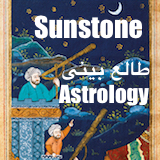ROGHAYEH REZAEI
IranWire
The bazaars that once bustled with haggling merchants and eager shoppers now echo with hollow footsteps. Restaurant districts that once thrived on evening crowds sit largely abandoned. Even Tehran's famously traffic-choked streets seem unusually quiet.
Weeks days after a ceasefire ended the brief but intense war between Iran and Israel, the Iranian capital remains a shadow of its former self.
Residents describe a city gripped by an atmosphere of uncertainty, economic paralysis, and what some call "the dust of death."
"People are present, but it's like no one is here," said a resident of south Tehran who commutes daily to the city's northwest for work. "Tehran wasn't very happy before the war either, with all the traffic, misery, and poverty. But now it's a thousand times worse. It feels really sad."
The war, which began on June 13 when Israeli missiles targeted several locations in Tehran, lasted less than two weeks but left psychological scars that residents say run deeper than the physical damage.
Sahar, a resident of western Tehran, fled to her family's garden in northern Iran when the Israeli attacks began. Now, back in the capital, she is struck by how many people have yet to return.
"Everywhere is empty," she said. "It's as if half the people who left haven't come back. It's unclear why or where they stayed - maybe they're afraid it will start again, and that's why they're not returning."
The emptiness extends beyond neighborhoods into Tehran's commercial center. The city's historic bazaar, often a barometer of economic activity and public sentiment, now paints a bleak picture.
"In the market, the effects and shock of war are still felt," Sahar said. "People aren't buying. Tehran's bazaar is very empty. It's clear that people are worried the war might start again, so they're afraid to spend."
The economic paralysis has rippled through multiple sectors. Iranian entrepreneur Siamak Ghasemi wrote on social media that the housing market, particularly in affluent districts of northern Tehran, has been devastated.
"Images and videos were etched in people's minds," he wrote, describing how the market "fell into complete brain shock."
While much of Tehran's infrastructure remained intact, specific attacks left lasting impressions on residents.
The June 15 strike on the Office for Mosque Affairs building at Qods Square created what witnesses describe as a nightmare scenario.
Mehdi, who passes through the area daily, cannot forget the video footage that emerged from the attack.
"The nightmare of that video - cars stopped at a red light torn from the ground with the asphalt - never ends," he said. "I pass through there every day. They've cordoned off the area, but how can you forget the fear that I could have been there that day?"
Another devastating strike hit Evin Prison on July 23. Iranian officials reported 79 deaths, though unofficial sources suggest the actual toll was higher.
Many believe most of the victims were interrogators working under false identities, which may explain the government's reluctance to provide detailed casualty figures.
For older residents like Mehdi, who was a child during the eight-year Iran-Iraq war in the 1980s, the recent conflict brought back painful memories.
However, he doesn't expect Tehran's damage to go unrepaired for as long as areas in Khuzestan province, which still bear scars from the earlier war.
"Many people on social media have posted photos of Khorramshahr and Khuzestan today, 37 years after the end of the Iraq War, saying these places still haven't been rebuilt," he said. "I don't think it will take that long to rebuild Tehran's ruins. After all, there's the matter of maintaining face in the capital and protecting their own economic interests."
Beyond the physical emptiness, residents describe a psychological atmosphere that feels oppressive.
The phrase "dust of death" has emerged in social media discussions about the city's current state.
"A numbness has taken over all of Tehran," one social media user wrote. "All businesses have collapsed. I have even less patience to continue than before. Everyone's routine and expectations have been disrupted. There's no patience, no feeling, no mood for anything."
The security situation has added another layer of anxiety. Government media have reported hundreds of arrests on charges of "spying for Israel" over the past two weeks, while parliament is considering legislation to increase punishments for "spies and collaborators with hostile governments."
"There's also fear of espionage accusations," said a resident of East Tehran. "That's why many people might not even speak their minds."
The conflict's economic impact extends far beyond empty bazaars and a collapsing housing market.
Labor activists report widespread layoffs and warn of deepening poverty.
"The wave of layoffs is terrible," said one labor rights expert. "Everywhere I look, people have become unemployed. With this uncertainty and the current economic conditions, they have no hope of finding work. I don't know how they'll cover their expenses."
Restaurant districts that once buzzed with nighttime crowds now sit largely deserted. Sattar Khan Street, known for its restaurants, cafes, and shops, exemplifies the change.
"Before the war, it was full of people at night coming for restaurants, cafes, and juice shops, but now it's really empty," said the south Tehran resident.
Perhaps most troubling for residents is the uncertainty about what comes next. While the ceasefire has been held for 21 days, many wonder if it will last.
"Among people, especially after Netanyahu went to the White House, there was a lot of talk about war starting again," said one resident. "Now, with negotiations starting, it's become somewhat less prominent. But today, they said Friday's negotiation was cancelled. People are worried."
Some describe a population that seems to be "waiting for war" to resume.
“Worried or expecting war to start? I think many are waiting,” said the East Tehran resident. “Because the job was left half-done, and they think it can’t stay like this. That’s why people are cautious about everything - from how they spend money to what they say in taxis and the metro.”
Tehran’s current state is a stark contrast to the city that existed before June 13, when Israeli missiles first struck.
Initially, some residents welcomed the killing of IRGC commanders, but as the conflict prolonged, fear and trauma took hold.
Now, according to residents and eyewitness accounts, Tehran struggles under what they describe as the weight of uncertainty and the looming prospect of renewed conflict.










Comments